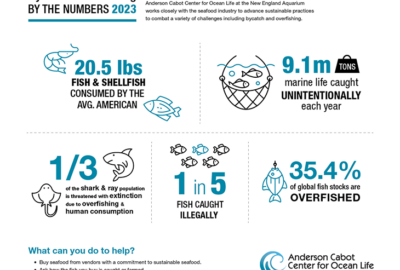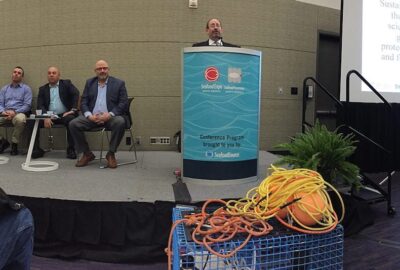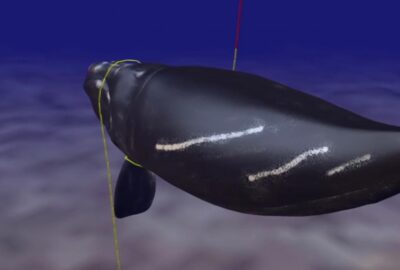National Seafood Month: Lobster
By Michelle Cho on Friday, October 02, 2020

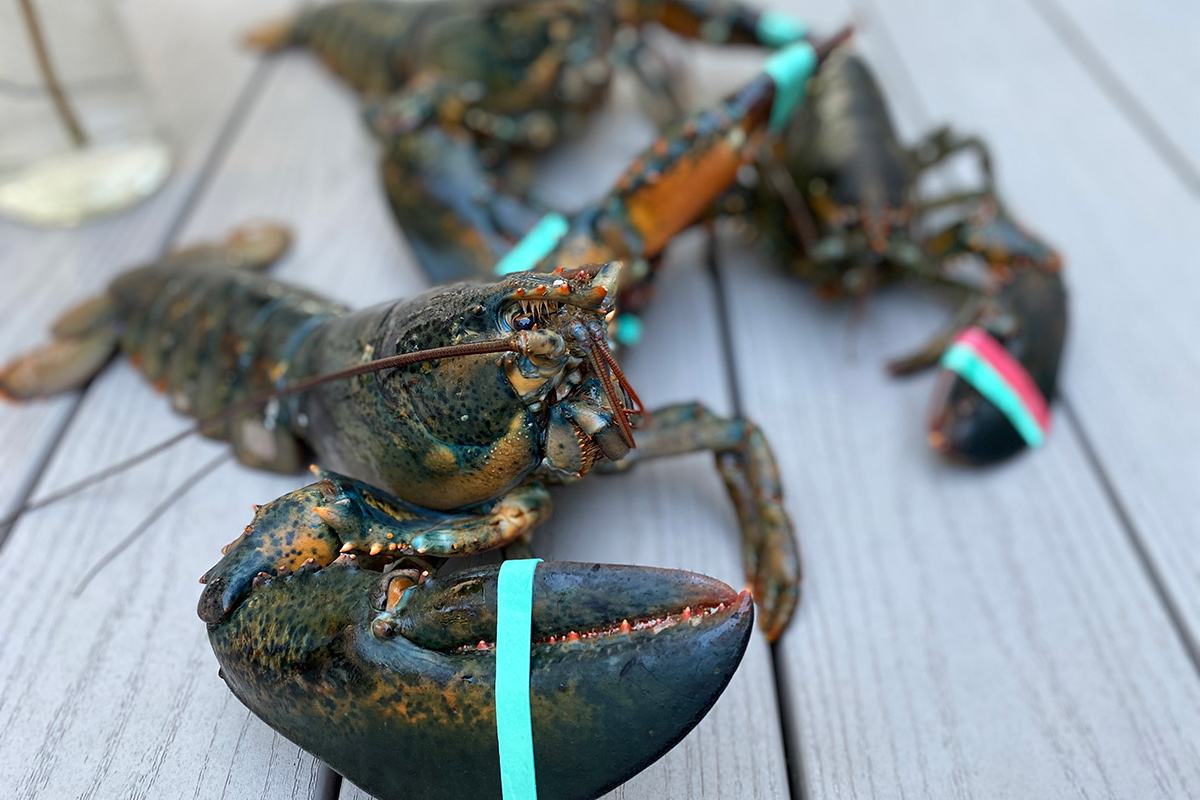
What is more quintessential New England than seafood? And what is more quintessential New England seafood than lobster? Not much. But did you know that fishing can pose a risk to critically endangered marine life? That’s why we decided to kick off National Seafood Month with some information on how the Aquarium’s research arm, the Anderson Cabot Center for Ocean Life (ACCOL), is working with the local fishing community to provide solutions to ensure seafood can be caught in ways that are safer for whales and other large wildlife.
The North Atlantic right whale is a critically endangered species, meaning it is facing an extremely high risk of extinction in the wild. The population has been declining since 2010, and there are currently fewer than 409 individuals left.
One of the leading causes of death to right whales is entanglement in fixed fishing gear, which rests on the seafloor, such as the pots or traps used to catch lobster, snow crab, and some types of fish. This gear uses a rope leading to a surface buoy that is used to retrieve it. Entanglements can occur frequently in this type of gear and in fact, entanglement is killing right whales at a rate faster than the population is growing. Every year, ACCOL scientists and other researchers along the eastern seaboard observe large whale species entangled in fishing gear and others with scars indicating they have been previously entangled. Rope used with fishing gear can also entangle and harm other endangered, threatened, and protected species, like leatherback sea turtles.
One of the reasons entanglement is a growing issue for right whales and other large whale species in the North Atlantic is because the ropes used for fishing gear have gotten stronger over the years. The use of stronger rope correlates with a higher number of entanglements of right whales and an increase in severity of related injuries. Scientists have also observed this entanglement trend in other parts of the world and with other whale species, such as in the Northeast Pacific, Southern Ocean, and Eastern Atlantic. Even if right whales survive entanglement with fishing gear, ACCOL scientists have found that they suffer long-term impacts on their health and reproduction.
Fortunately, ACCOL researchers have been working with local fishers to modify fishing gear to lessen the danger to North Atlantic right whales. Whale release rope was designed by fishermen from the South Shore Lobster Fishermen’s Association and uses “weak sleeves” that are inserted at certain intervals into the regular fishing rope. Some types of fishing rope, which string traps along the seabed as well as vertically to a buoy on the surface for easy collection, can require up to 4,000 lbs. of force to break, which is well beyond the force an average sized whale can exert. However, weak sleeves break with less than 1,700 lbs. of force. That is an amount of force ACCOL researchers found that a young right whale could exert, so using whale release rope with sleeves integrated at regular intervals increases the chances that a whale could break free if entangled. The sleeves were also developed to be bright orange, as ACCOL researchers found that right whales may be able to see them better.
The weak sleeves are bright orange in the photos.
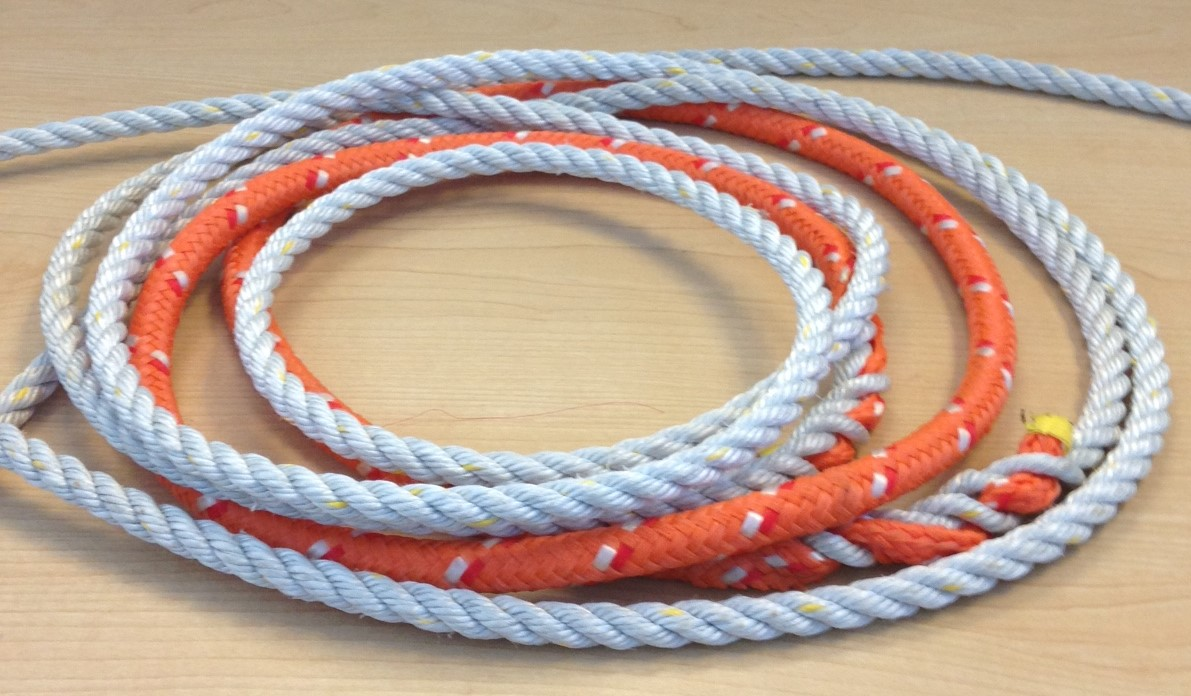
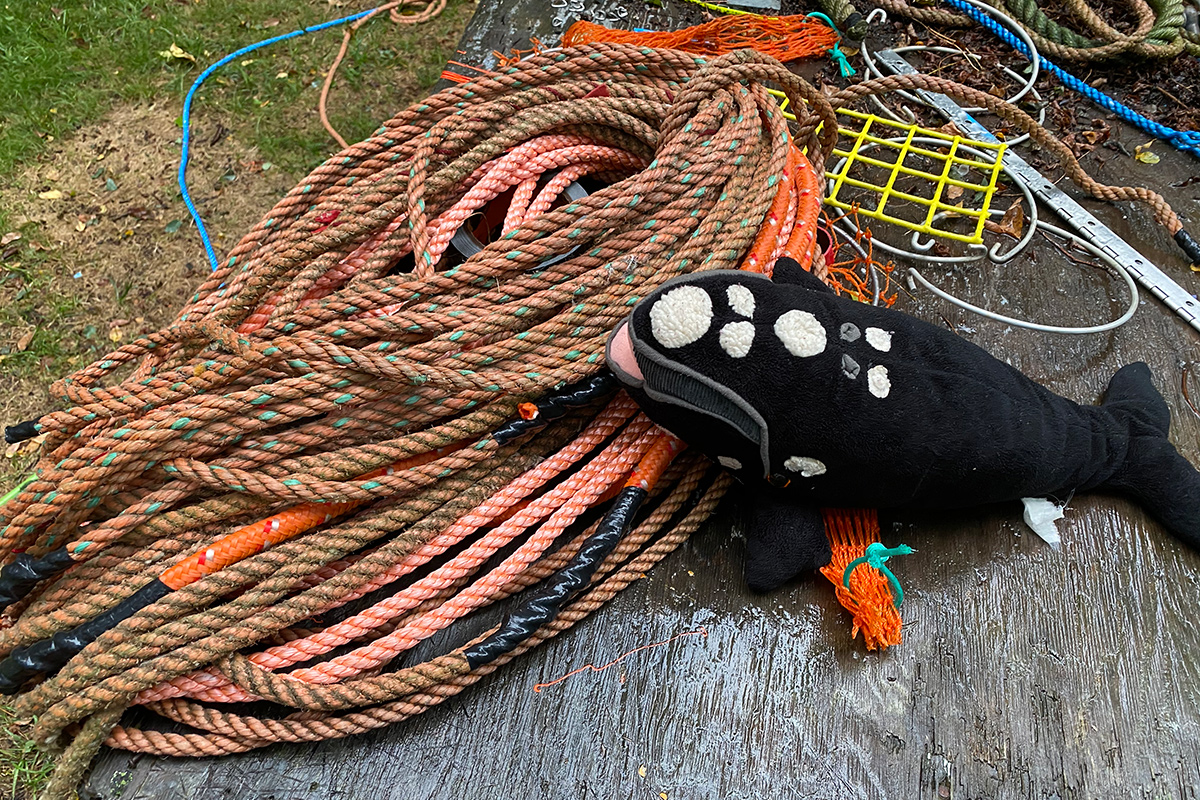
ACCOL researchers have also tested a ropeless fishing system with offshore lobster fishers. In the offshore environment, whale release rope may not be strong enough to withstand the extra force on the fishing gear due to deeper water and stronger currents, so a different solution may be needed in these conditions. Ropeless systems keep ropes out of the water column until a fisher sends their own unique, user-specific, acoustic signal to the gear on the ocean floor. This signal enables the gear to rise to the surface when the fisher is there ready to retrieve it. This technique is safer for many types of wildlife, including whales and endangered leatherback sea turtles, which face an entanglement risk.
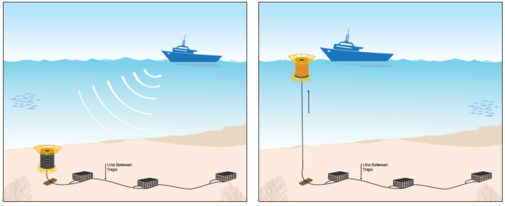
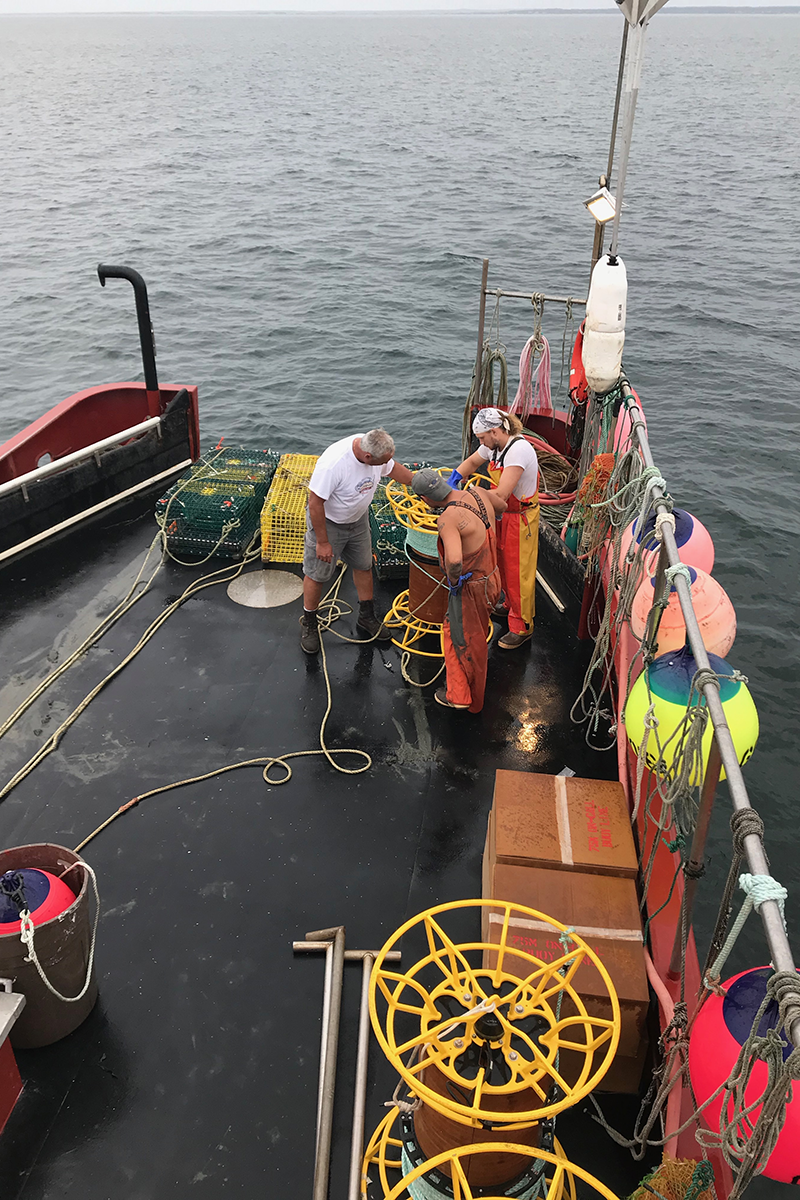
The whale release rope solution is not just in the research phase, it is currently being used by some members of the lobster fishing community. For example, one local lobster fisher, Rob Martin of the South Shore Lobster Fishermen’s Association, has switched to only using whale release rope. Rob Martin sells his lobsters to the public at Salty Lou’s, which is in Sandwich, on Cape Cod. To buy his lobster you can order by text and pick it up. Other lobster fishers in his area are also using whale release rope, and those from other areas and fisheries are also testing weak sleeves and similar modifications and considering using them in their gear to make it safer for whales.
Ropeless fishing technology is advancing rapidly and may become a viable option especially for offshore fishing where whale release ropes may not be adequate. Rob Martin is also working to help put ropeless gear in use.
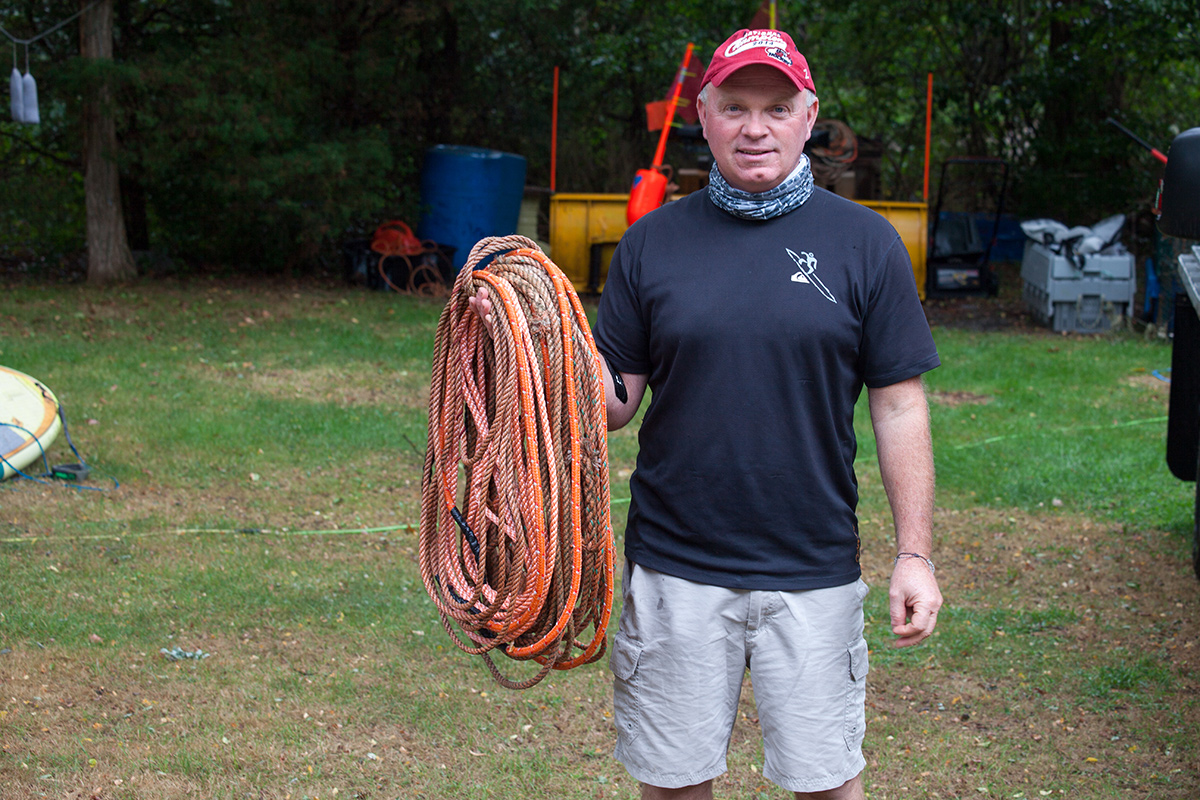
So how do we get all of the industry to proactively consider and adopt these and other potential solutions to provide seafood that is caught in ways that are safer for whales and other marine wildlife? In addition to supporting fishers like Rob and others like him, we recommend that people start conversations with their grocers and restaurant proprietors about the seafood they sell. Where does it come from? What kind of gear was used to catch it? The more we request this, the more these businesses will realize that consumers care about where their seafood comes from and the environmental impact it might have. We should also ask our local and federal government representatives to pass legislation in favor of marine conservation and incorporating innovative solutions for fishing. Then we can help the seafood market in further supporting fishing practices safer for right whales and other ocean wildlife. Every journey begins with a single step—or conversation–so please spread the word!
Pace, R.M., Corkeron, P.J., Kraus, S.D. (2017). State–space mark–recapture estimates reveal a recent decline in abundance of North Atlantic right whales. Eco Evol 1-12.
Knowlton, A.R., J. Robbins, S. Landry, H. McKenna, S.D. Kraus, and T. B. Werner. 2016. Effects of fishing gear strength on the severity of large whale entanglements. Conservation Biology 30: 318-328.

